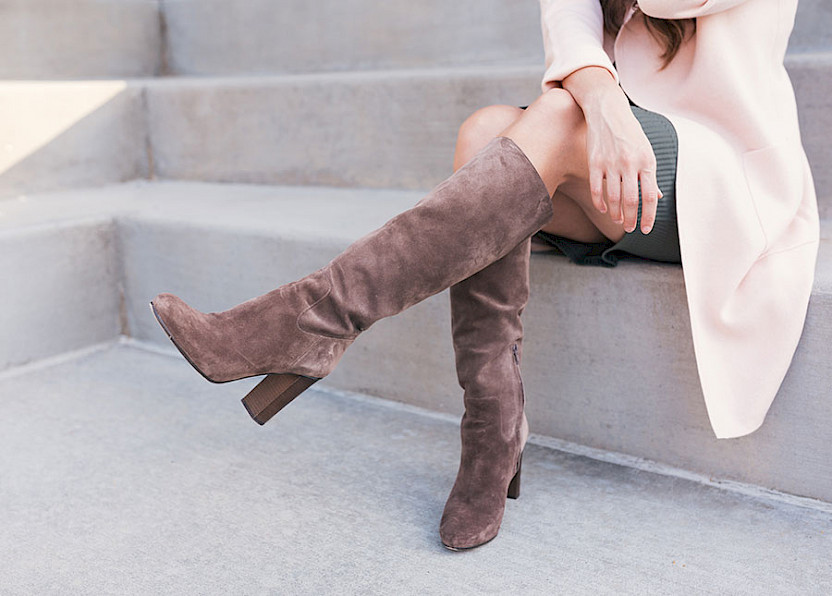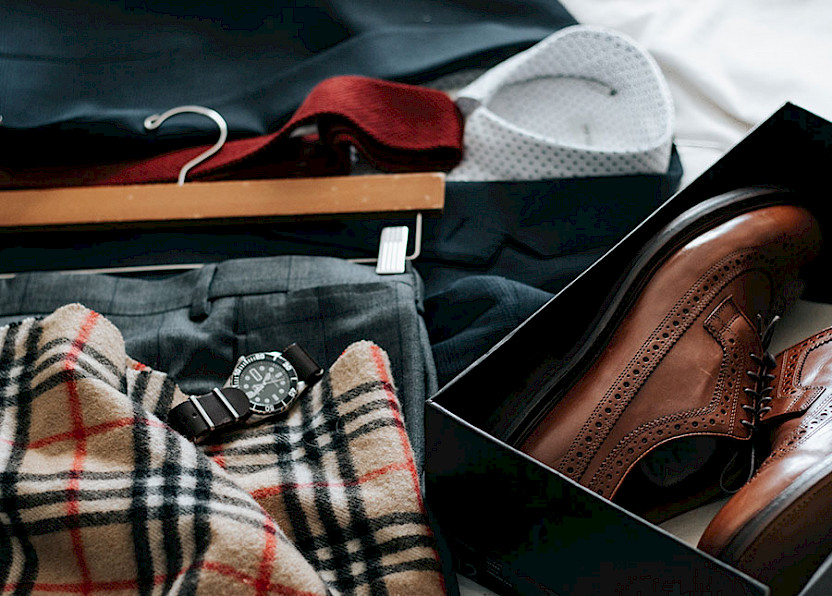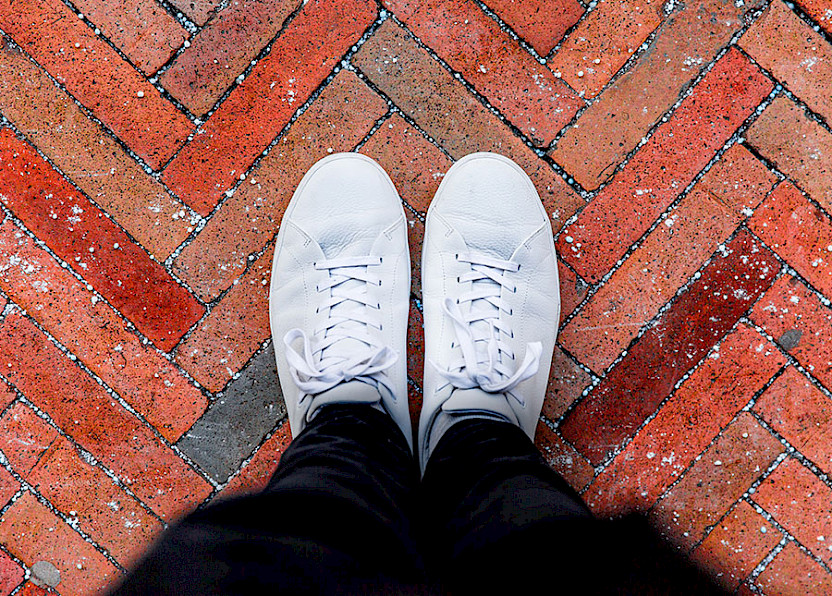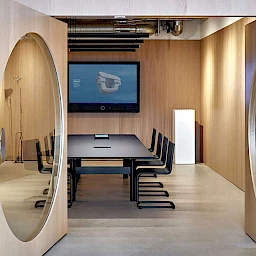The world of work has changed significantly in recent years. Hybrid work and mobile working are well established. The pandemic in particular has shown that flexible working from home or at other workplaces is possible. So it is obvious that the way we dress for business has also changed.
Statistics prove a “New Formal” in business fashion
Sales of business suits and costumes have declined in the last few years. The PwC survey “Dress code in flux: How business fashion is changing” revealed that the share of suits and costumes has declined in many companies. At the same time, the demand for comfortable clothing such as hoodies has increased. This is also reflected in the sales figures of the corresponding clothing items. According to the Textile Industry Report 2021, sales for men’s suits fell by 14 % and those for women’s suits by 9 %. In contrast, sales for sporty and comfortable clothing increased by 16 %.
Casual business wear is no longer uncommon and is accepted by many companies. However, there are differences between industries and companies. In more conservative industries such as banking and insurance, hoodies are still considered inappropriate, whereas the trend in start-ups and many medium-sized companies is more towards a less formal business dress code that also allows the wearing of hoodies. In this way, companies are responding to the desires of their employees. According to the BearingPoint study “Office wear of the future – what will I wear to the office tomorrow?” published last year, which surveyed 1,000 professionals in the DACH region, 62 % would like to wear T‑shirts and jumpers to the office in the future. Only 2 % can still imagine going to work every day with a tie or neckerchief. Also, the spending on specific office clothing fell significantly among the respondents in the last few years. While annual expenditure in 2019 still averaged 1,176 euros, it fell to an average of 480 euros in 2020/2021. Spending by women fell by 64 %, while men reduced it by 56 %.

Photo: iStock

Photo: unsplash.com / @ Alimarel

Photo: iStock / K-Angle
Statistics prove a “New Formal” in business fashion
Sales of business suits and costumes have declined in the last few years. The PwC survey “Dress code in flux: How business fashion is changing” revealed that the share of suits and costumes has declined in many companies. At the same time, the demand for comfortable clothing such as hoodies has increased. This is also reflected in the sales figures of the corresponding clothing items. According to the Textile Industry Report 2021, sales for men’s suits fell by 14 % and those for women’s suits by 9 %. In contrast, sales for sporty and comfortable clothing increased by 16 %.
Casual business wear is no longer uncommon and is accepted by many companies. However, there are differences between industries and companies. In more conservative industries such as banking and insurance, hoodies are still considered inappropriate, whereas the trend in start-ups and many medium-sized companies is more towards a less formal business dress code that also allows the wearing of hoodies. In this way, companies are responding to the desires of their employees. According to the BearingPoint study “Office wear of the future – what will I wear to the office tomorrow?” published last year, which surveyed 1,000 professionals in the DACH region, 62 % would like to wear T‑shirts and jumpers to the office in the future. Only 2 % can still imagine going to work every day with a tie or neckerchief. Also, the spending on specific office clothing fell significantly among the respondents in the last few years. While annual expenditure in 2019 still averaged 1,176 euros, it fell to an average of 480 euros in 2020/2021. Spending by women fell by 64 %, while men reduced it by 56 %.
Please also read

Post-Corona dress code changes corporate culture
You are what you wear, as the saying goes. This can also be applied to our appearance at work. The clothes, teams are wearing, are an expression of the values and the philosophy of a company. Clothes are an essential part of the identity of people as well as of organisations and allow external parties and applicants to draw conclusions about the culture being lived. “Fashion is only superficially irrelevant. Clothing is very effective and has a lasting formative influence,” says Prof. Dr Thomas Breyer-Mayländer, economist and professor of media management at Offenburg University of Applied Sciences, 2021 in the Personalmagazin talk with the IBA Forum. “Clothing is an expression of group and corporate culture and conveys the respective working attitude.”
A casual business dress code may be a sign of New Work and an agile mindset. Yet, it poses a risk to external perception, as formal dress still stands for professionalism and competence for most people and is therefore still expected in many cases in the interaction with external business partners and management. When employees dress differently in the office, this can have unexpected consequences. The BearingPoint study shows three approaches how companies can deal with this dress dilemma:



Post-Corona dress code changes corporate culture
You are what you wear, as the saying goes. This can also be applied to our appearance at work. The clothes, teams are wearing, are an expression of the values and the philosophy of a company. Clothes are an essential part of the identity of people as well as of organisations and allow external parties and applicants to draw conclusions about the culture being lived. “Fashion is only superficially irrelevant. Clothing is very effective and has a lasting formative influence,” says Prof. Dr Thomas Breyer-Mayländer, economist and professor of media management at Offenburg University of Applied Sciences, 2021 in the Personalmagazin talk with the IBA Forum. “Clothing is an expression of group and corporate culture and conveys the respective working attitude.”
A casual business dress code may be a sign of New Work and an agile mindset. Yet, it poses a risk to external perception, as formal dress still stands for professionalism and competence for most people and is therefore still expected in many cases in the interaction with external business partners and management. When employees dress differently in the office, this can have unexpected consequences. The BearingPoint study shows three approaches how companies can deal with this dress dilemma:
- Negotiation of smart dress code contracts, occasion-related rules that determine how employees have to dress in the company, depending on the occasion.
- Addressing office dress in the context of work, joint dress code discussions between managers and staff.
- Define business dress codes for all forms of hybrid work, in the office, mobile work, home office and video conferencing, to ensure a consistent external image of the organisation.
External appearance is a powerful non-verbal communication tool in a business context. It is associated with competence and professionalism and is a strong expression of corporate culture both externally and internally. Even though hybrid work has made business fashion more casual, psychologists, sociologists and management consultants agree that the world of work still needs a certain degree of formality. However, this has changed.
For more information, read the following expert interviews with Ines Thömel and Prof. Dr Breyer-Mayländer (from 11 April. 2023).





